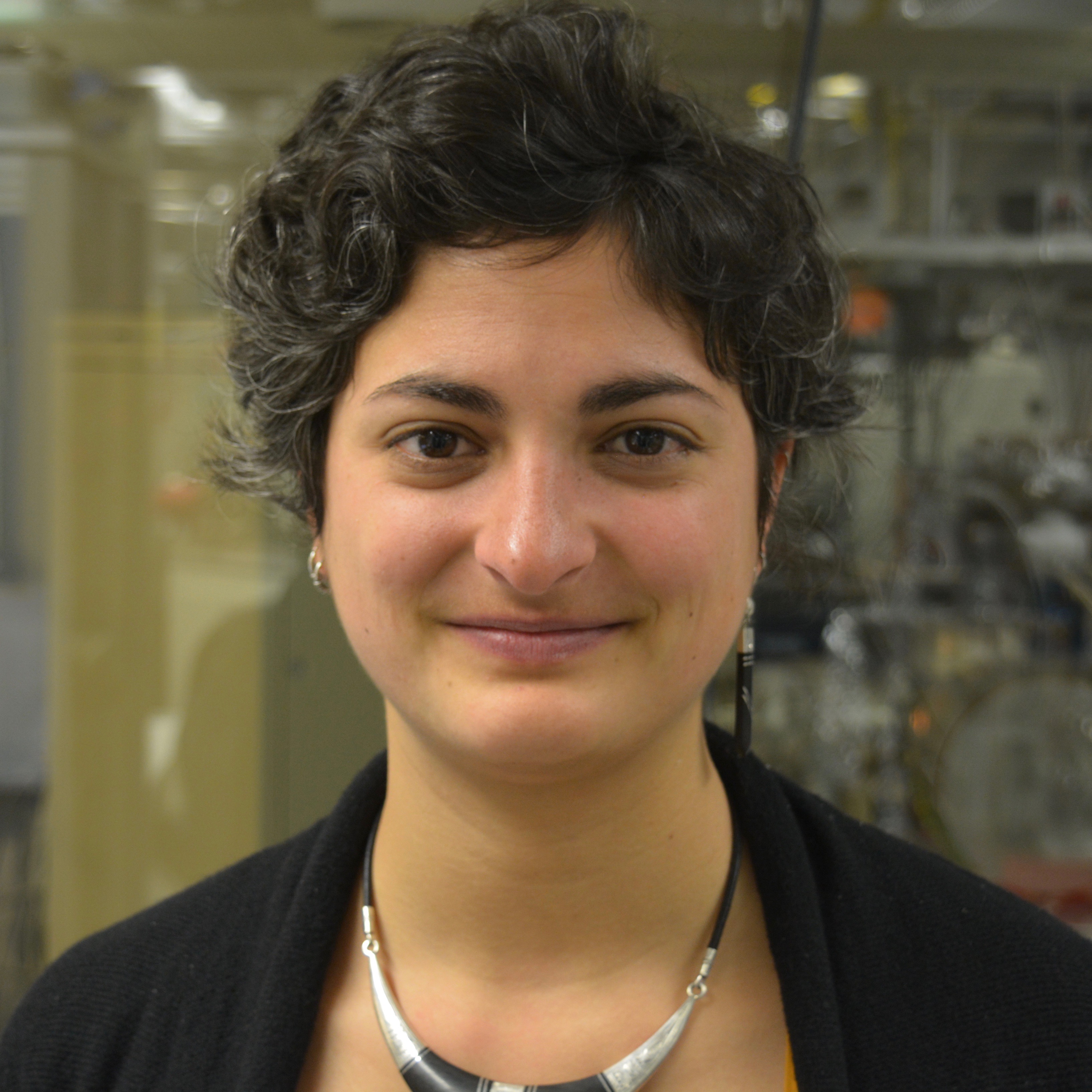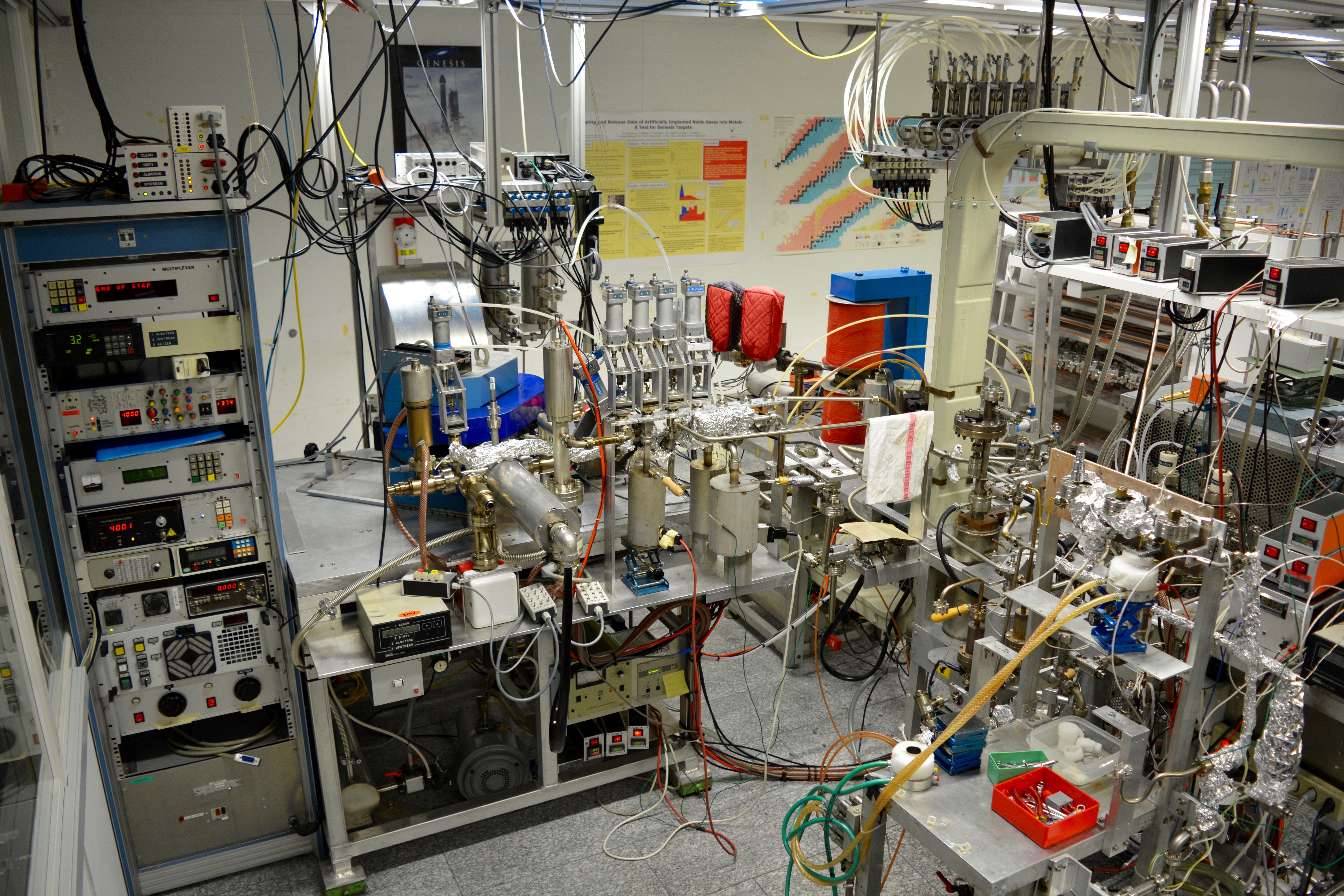Extremely different scales

You have to go deep down to the basement of one of the big buildings at ETH in the centre of Zurich, and pass a labyrinth of sophisticated equipment until at the far end of the full packed room you find the corner where Maïa Kuga spends days and sometimes even weeks working with extra-terrestrial material.The tiny samples of meteorites are hidden in a big machine. “Here I have access to superb equipment,” the French scientist says sitting opposite to the so-called mass spectrometer:“It’s a privilege to work in the group of professor Maria Schönbächler at ETH.”Maïa Kuga is fascinated by the wide range of scales she is dealing with – measuring very low concentrations of atoms of noble gases to find out more about the billions of years old history of Earth and other planets orbiting stars light years away.Follow the scientist on a virtual lab visit by clicking on the marked areas on the image!
Alone in a noisy place
The big box controls the electronics. It guaranties that we have the same conditions during all the experiments. Normally we don’t touch it. The machine is so stable that only once or twice a year, the electronics have to be controlled.For measuring the individual samples I have a homemade software on my desktop computer. It tells me when I have to open or close a valve. I have to be focused on what I am doing which is quite demanding: The vacuum pumps make a lot of noise, I am alone and there is no daylight. Sometimes I work in the lab for 3 days or a week or even longer. But at the end I am happy to have a lot of data. The meteorites can tell us a lot about the early stages of the solar system when objects were degased and lost volatiles. Another widely discussed topic are presolar grains that originated at a time before the sun was formed. These presolar grains were first discovered thanks to noble gas analyses!The whole field is very fascinating, but of course, I cannot only live in the lab. After work I do a lot of dancing – modern dance or Tango. I like jogging, and if I don’t work on weekends I like skiing, hiking or climbing. I have to be outside to compensate for the days in the lab.
Albatros
The blue box hidden behind the metal tubes and valves is the heart of the machine: “Albatros”. This is the name of the mass spectrometer. I have been told that it got this name because it took a very long time to build it, but at the end it functioned exceptionally well and it still does.The principle of the mass spectrometer is simple: It sorts ions – charged atoms – according to their mass. The ions are produced in the source by electron bombardment with the help of a tungsten filament put at high voltage. The ions entering the spectrometer through a flight tube are deflected by a magnet. Their path depends on their mass. It is as if you ride a bicycle down the road and around a curve: People with different weight are carried away more or less.With Albatros we can measure the concentration of all noble gases and their isotopic compositions. Argon for instance has three isotopes, A-36, A-30 and A-40. We collect all the ions and then translate their intensity into concentration thanks to periodic measurement of calibrated quantities.
Purifying gases
The gases extracted from the meteorite samples have to be purified before we direct them into the source of the mass spectrometer. Otherwise the signal is bad.At the beginning we have not only noble gases but also water, carbon dioxide, hydrogen, or oxygen, all the gases that can be extracted by heating up a rock sample. On a first purification line I manually open little valves for some minutes to specific volumes where “getters” (active metallic surface) trap the chemically active components.The trick is that the noble gases won’t react since they are inert. This procedure is done several times. It is as if you rinse your clothes. At the start the used rinsing water is still full of soap and you have to repeat the process in order to have clean water. After the manually controlled line, the gases pass this second purification line where the valves automatically open and close.
Burning meteorites
A meteorite is a piece of rock, but coming from the interplanetary space. To extract the noble gases trapped in the rock we heat the samples in this oven that reaches up to 2000 degrees.On the top of the device, there is a plate with 22 small holes. There we can place 22 different samples. With a little needle at the side we then push a sample to the middle of the tube where it falls down and gets burnt. So we can measure a lot of samples without having to open the oven. This is a big advantage because the air is our enemy.The whole system, the purification line, and the mass spectrometer only works properly if there is a very high vacuum. The noble gases are very rare in the rock samples, they are trace elements. But since noble gases are thought to be inert, they trace the physical processes the samples have seen. One application for instance is to calculate the time the meteorite has spent in interplanetary space before they impact on Earth.
Christmas atmosphere
We have a lot of aluminium foil wrapped around tubes. This Christmas atmosphere in our lab has a good reason: Because the noble gases that we want to measure are so rare we have to work in static mode. Therefore, we need a very high vacuum. So each time we have opened the oven and destroyed the vacuum, we will heat the tubes from the outside with a wire to get rid of all the gases that may be adsorbed on the inner tube surfaces. The aluminium foil wrapped around the wires guarantees that we have a homogeneous temperature along the tubes.A warm tube could also enhance the diffusion of the noble gases. Xenon, for instance, is quite “fat” – a large, slow atom. At a higher temperature than the ambient temperature of the lab, we would have to wait a bit less to get a result. Normally it takes about 3 hours for one measurement, for one data point it is almost a day with the calibration. That’s a long time compared to the outcome in astrophysics.
